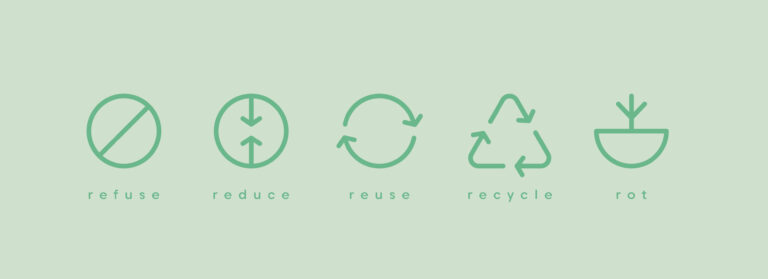Circularity truths: it’s time to toss out the myth of recycling
One of the biggest myths about circularity is that it is all about recycling. Drop your used packaging into the right bin, and everything will take care of itself. The waste that has been diverted from landfill will magically emerge as a brand-new product.
Unfortunately, this misconception rests on an illusion: that all discarded packaging will end up in a new one. It is time for circularity truth to bust this myth of recycling. Recycling cannot reach 100% efficiency—some of the original inputs will inevitably go to waste. According to the Ellen MacArthur Foundation, even aluminum, among the most recyclable materials commonly used for packaging, can only reach 90% efficiency. Other inputs, like plastic, are often much less recyclable. As the Foundation notes, recycling only slows down the loss of virgin material; it does not stop it.
This is why recycling is the last step of the common refrain, “reduce, reuse, recycle.” While recycling is far preferable to letting rubbish rot in landfill, ideally it will happen only after the first two—reduction and reuse. In particular, new business models around reuse are emerging throughout the packaging value chain. This is driven by a combination of consumer demand, regulation—such as EU rules on packaging and packaging waste—and corporates’ own sustainability and net-zero targets, of which circularity is a major component.
Incentivizing the customer for reuse
So much interest in reuse is bubbling in the ecosystem that we held our most recent packaging Sprint on the subject. The Sprint brought together companies, experts and startups innovating in fields ranging from intelligent track-and-trace to new business models for reusable cups and containers. It provided a window into the challenges and opportunities a reuse economy presents, and how the packaging world can embed it more deeply into their circularity plans.
The consumer perspective was a key emphasis. A smooth reuse system may see customers gather up their empty packaging, for instance, and return it to the point of purchase, put it out for a collection agent who comes to their home, or exchange it or refill it at branded stations in retailers. The Ellen MacArthur Foundation categorizes different potential reuse models into four overarching buckets: refill at home, refill on the go, return from home and return on the go.
But companies hoping to implement such a program need to watch out for friction and inconvenience. Customers need incentives to make the extra effort that reuse models require. This could take the form of discounts, points, cash or other rewards. Otherwise, it will not be worth the customer’s time and effort.
Reuse requires scale and collaboration
Value-chain players also need to consider scale and collaboration, otherwise it will be fiendishly difficult to make money from reuse. Reuse models pencil out only if packaging is standardized to the point that different brands can draw from the same pool of “empty cups and containers” in creating new products to put back on shelves. Otherwise, cleaning and sorting becomes an expensive nightmare. Such co-mingling also presents challenges for makers of products like food and cosmetics, which need to be kept in ultra-hygienic containers.
Regulations, such as Europe’s extended producer responsibility directive, which requires brands and packaging producers to help pay for environmentally friendly waste processing, could drive this type of coordination between companies. For instance, Huhtamaki, one of our limited partners, co-founded The Cup Collective. This aims to scale up collection of empty paper cups in cities across Europe, in partnership with other private actors and local governments. Such initiatives demonstrate the multi-stakeholder approach that will be needed to make reuse a reality.

A need for every “re-”
Looking beyond reuse, regenerative products could be another front in the battle for circularity. Packaging made from paper derived from sustainably-grown trees could be a major sustainability lever, as such products can be composted. They are not, however, without their challenges. For more on this, check out Emerald Investment Manager Annina Winkler’s deep dive on paper packaging. Ultimately, the packaging sector will need to leverage every “re-” it can to reduce waste and realize true circularity.
Previous packaging sprints:
Sprints: Sorting through a flurry of new recycling technologies

